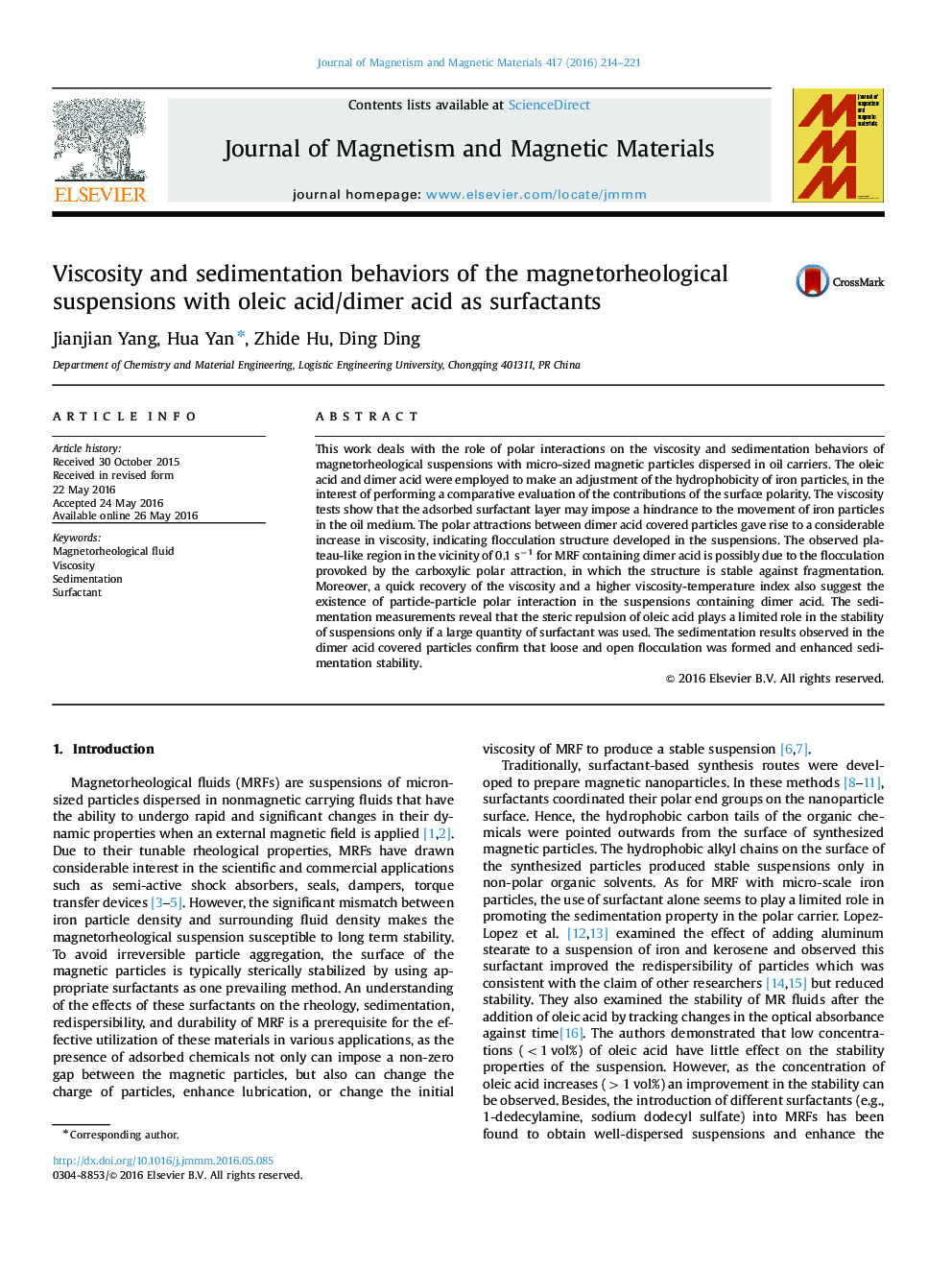| Article ID | Journal | Published Year | Pages | File Type |
|---|---|---|---|---|
| 1797779 | Journal of Magnetism and Magnetic Materials | 2016 | 8 Pages |
•Surfactants were employed to make adjustments of the hydrophobicity of particles.•Polar attractions between particles increased the viscosity considerably.•Loose and open flocculation was formed in CI/DA suspension.•The steric repulsion of oleic acid played a limited role in the stability.
This work deals with the role of polar interactions on the viscosity and sedimentation behaviors of magnetorheological suspensions with micro-sized magnetic particles dispersed in oil carriers. The oleic acid and dimer acid were employed to make an adjustment of the hydrophobicity of iron particles, in the interest of performing a comparative evaluation of the contributions of the surface polarity. The viscosity tests show that the adsorbed surfactant layer may impose a hindrance to the movement of iron particles in the oil medium. The polar attractions between dimer acid covered particles gave rise to a considerable increase in viscosity, indicating flocculation structure developed in the suspensions. The observed plateau-like region in the vicinity of 0.1 s−1 for MRF containing dimer acid is possibly due to the flocculation provoked by the carboxylic polar attraction, in which the structure is stable against fragmentation. Moreover, a quick recovery of the viscosity and a higher viscosity-temperature index also suggest the existence of particle-particle polar interaction in the suspensions containing dimer acid. The sedimentation measurements reveal that the steric repulsion of oleic acid plays a limited role in the stability of suspensions only if a large quantity of surfactant was used. The sedimentation results observed in the dimer acid covered particles confirm that loose and open flocculation was formed and enhanced sedimentation stability.
